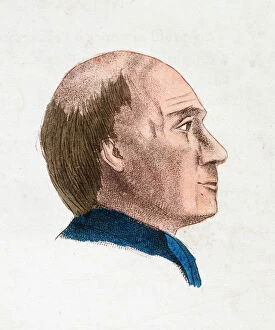Johann Kaspar Collection
Johann Kaspar von Kerl, also known as Johann Kaspar Lavater, was a prominent figure in the field of physiognomy during the 18th and early 19th centuries
All Professionally Made to Order for Quick Shipping
Johann Kaspar von Kerl, also known as Johann Kaspar Lavater, was a prominent figure in the field of physiognomy during the 18th and early 19th centuries. Born in 1741 and passing away in 1801, Lavater dedicated his life to studying facial characteristics and their correlation with personality traits. One of his notable works is an engraving from 1830 that depicts Johann Kaspar von Kerl. This image showcases the face of a man who lived between 1628 and 1693, capturing his features for posterity. Lavater's own artistic skills are evident in his depictions of various temperaments. In one series from 1808, he explores different facial characteristics associated with specific personalities. From melancholic individuals to loafer types, strict intellectuals to philosophical souls, cheating deceivers to fiery passionate beings - Lavater's keen eye captures these distinct traits on paper. The influence of other renowned figures can also be seen within Lavater's work. For instance, Andreas Vesalius, a Flemish anatomist from the sixteenth century, is depicted alongside Lavater himself in another artwork dating back to the late eighteenth or early nineteenth century. Johann Kaspar Lavater left behind a legacy that continues to intrigue scholars today. His meticulous observations and artistic renderings shed light on how our physical appearances may reflect our inner selves. Through his studies on physiognomy, he aimed to unravel the mysteries hidden beneath each individual's unique countenance - an endeavor that still captivates curious minds centuries later.













